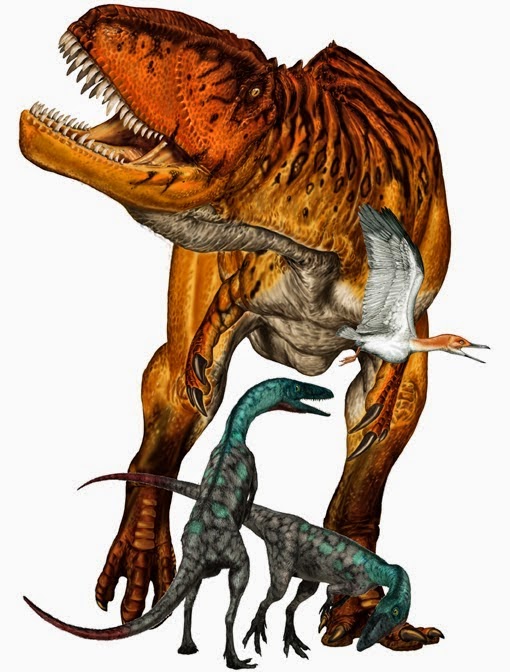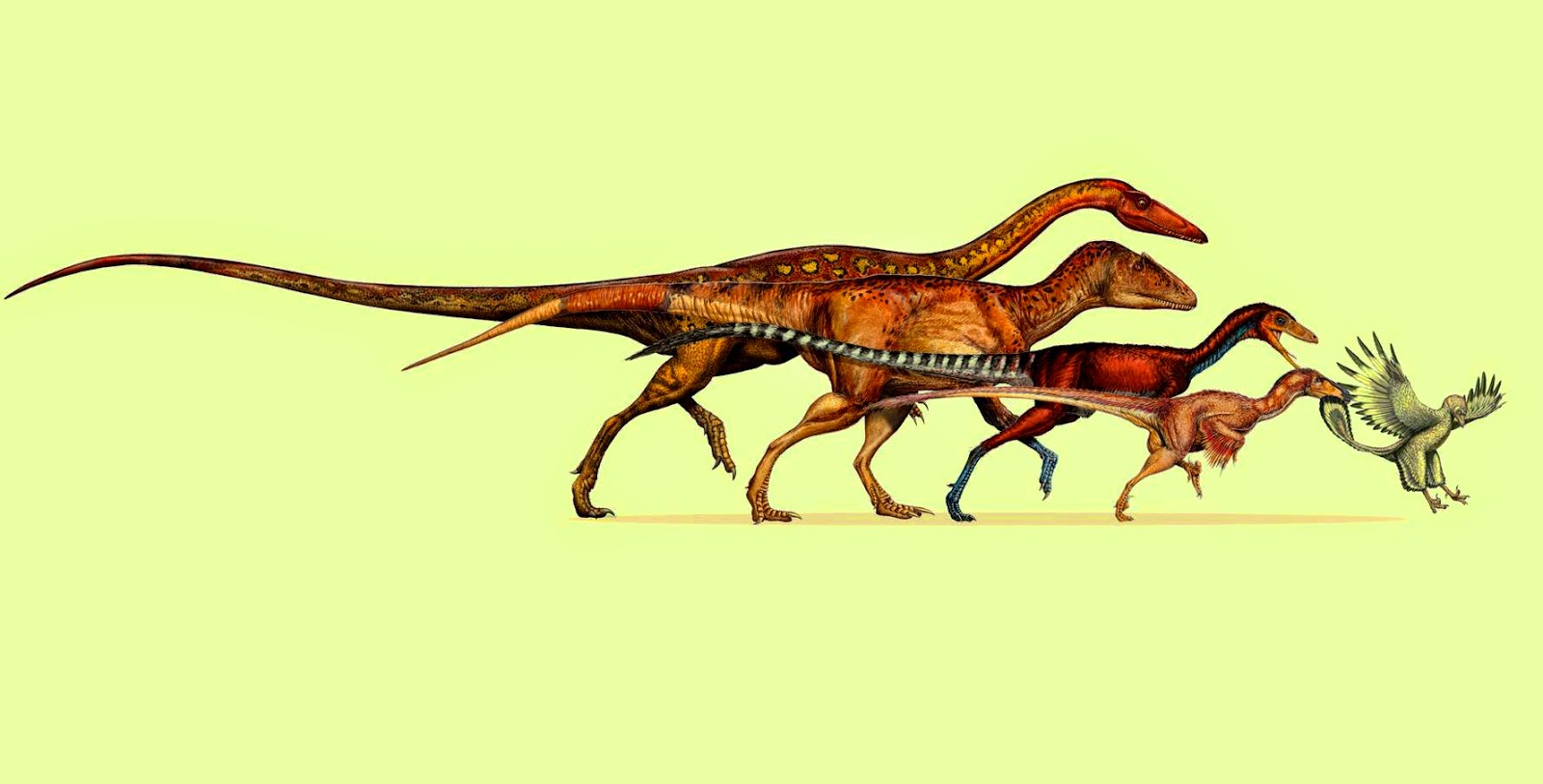[Most Recent Entries] [Calendar View]
Thursday, August 7th, 2014
| Time | Event | ||||
| 4:56p | [Paleontology • 2014] Laquintasaura venezuelae • A Palaeoequatorial Ornithischian and New Constraints on Early Dinosaur Diversification
Abstract Current characterizations of early dinosaur evolution are incomplete: existing palaeobiological and phylogenetic scenarios are based on a fossil record dominated by saurischians and the implications of the early ornithischian record are often overlooked. Moreover, the timings of deep phylogenetic divergences within Dinosauria are poorly constrained owing to the absence of a rigorous chronostratigraphical framework for key Late Triassic–Early Jurassic localities. A new dinosaur from the earliest Jurassic of the Venezuelan Andes is the first basal ornithischian recovered from terrestrial deposits directly associated with a precise radioisotopic date and the first-named dinosaur from northern South America. It expands the early palaeogeographical range of Ornithischia to palaeoequatorial regions, an area sometimes thought to be devoid of early dinosaur taxa, and offers insights into early dinosaur growth rates, the evolution of sociality and the rapid tempo of the global dinosaur radiation following the end-Triassic mass extinction, helping to underscore the importance of the ornithischian record in broad-scale discussions of early dinosaur history. Keywords: Ornithischia, end-Triassic extinction, Lower Jurassic, osteohistology, palaeobiogeography
Barrett, Paul M.; Butler, Richard J.; Mundil, Roland; Scheyer, Torsten M.; Irmis, Randall B.; Sánchez-Villagra, Marcelo R. 2014. A Palaeoequatorial Ornithischian and New Constraints on Early Dinosaur Diversification. Proceedings of the Royal Society B. 281 (1791): 1–7. doi: dx.doi.org/10.1098/rspb.2014.1147 Laquintasaura venezuelae: New Herbivorous Dinosaur Discovered in Venezuela | ||||
| 4:58p | [Paleontology • 2014] Sustained Miniaturization and Anatomical Innovation in the Dinosaurian Ancestors of Birds
ABSTRACT Recent discoveries have highlighted the dramatic evolutionary transformation of massive, ground-dwelling theropod dinosaurs into light, volant birds. Here, we apply Bayesian approaches (originally developed for inferring geographic spread and rates of molecular evolution in viruses) in a different context: to infer size changes and rates of anatomical innovation (across up to 1549 skeletal characters) in fossils. These approaches identify two drivers underlying the dinosaur-bird transition. The theropod lineage directly ancestral to birds undergoes sustained miniaturization across 50 million years and at least 12 consecutive branches (internodes) and evolves skeletal adaptations four times faster than other dinosaurs. The distinct, prolonged phase of miniaturization along the bird stem would have facilitated the evolution of many novelties associated with small body size, such as reorientation of body mass, increased aerial ability, and paedomorphic skulls with reduced snouts but enlarged eyes and brains. Michael S. Y. Lee, Andrea Cau, Darren Naish and Gareth J. Dyke. 2014. Sustained Miniaturization and Anatomical Innovation in the Dinosaurian Ancestors of Birds. Science. 345(6196); 562-566 DOI: dx.doi.org/10.1126/science.1252243 New Research Traces Evolution of Theropod Dinosaurs into Flying Birds |
| << Previous Day |
2014/08/07 [Calendar] |
Next Day >> |







